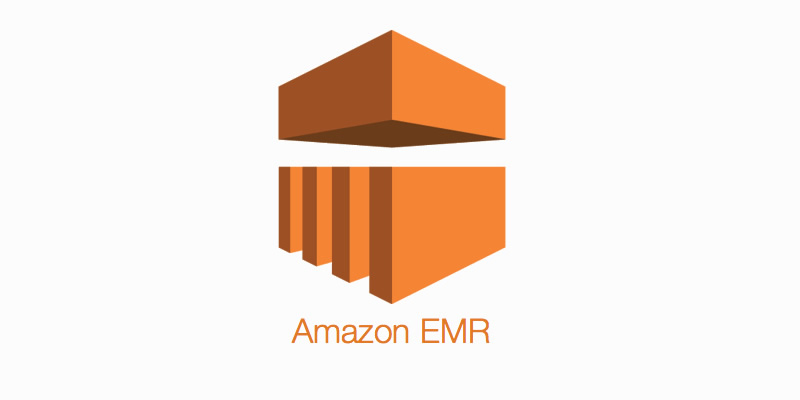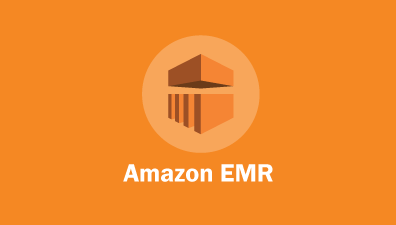Amazon is well-known for its successful enterprises and now it’s getting even more popular with Amazon web services. With the increasing importance of technology in the modern world, AWS has established its name in the cloud computing market as a top contender with a wide range of computing options for companies that are in dire need of digital solutions. Amazon EMR (Elastic MapReduce) is one of the AWS tools that are of specific use for big data processing and analysis.

Table of Contents
What is Amazon EMR?
Amazon EMR stands for Amazon Elastic MapReduce – an Amazon Web Service tool used for processing and analyzing big data. ERM solutions support the demand for computing horsepower and the necessary infrastructure to handle complex problems of sorting out trends and insights from a large amount of data. Amazon EMR’s related tools and platforms are stored in Amazon’s data center. The future of the deployment of big data lies in the cloud, which explains why EMR is becoming a vital platform for businesses who are looking for an affordable configuration solution as an alternative to in-house computing resources.
Amazon EMR is a platform that allows the developers to write codes for programs for processing and analyzing a massive amount of unstructured data across computing clusters. Based on a Java programming framework, Amazon EMR supports the process of handling large data sets in a distributed cloud computing environment. With the deployment of Amazon Elastic Compute Cloud (EC2) and Amazon Simple Storage Service (S3) servers, big data is processed across these virtual servers by Amazon EMR. The platform’s impressive resizing ability allows it to decrease or ramp up resources depending on the developers’ demand at any given time.
>> Read more: 7 Advantages of AWS (Amazon Web Service ) you should know
How does amazon EMR work?
Amazon EMR consists of many different layers that are responsible for a certain task in the computing cluster. These layers include:
- Storage: This layer is a group of file systems that come along with your cluster when being used. Some of the file system options include HDFS, EMRFS,…
- Cluster Resource Management: This layer is used for the management of cluster resources and assignment of processing data-related jobs.
- Data Processing Frameworks: this framework layer is used for processing and analyzing data.
- Applications and Programs: Amazon EMR supports a vast number of applications such as Hive, Pig, especially the Spark Streaming library for the provision of different capabilities as demanded.

First off, data input will be processed in Amazon EMR, and these input data then will be stored as files in a certain chosen underlying file system. These underlying file systems include AWS systems such as Amazon S3 or HDFS. In the processing sequence, data will be processed from this stage to the next. The final step involves the writing of the output data in a specified location which can be an Amazon S3 bucket.
How much does Amazon EMR cost?
With the vast number of applications that are supported on the platform, Amazon EMR automates launching and managing EC2 instances that are pre-loaded for data analysis. When being deployed, data can be accessed from computing nodes (HDFS) or in the external storage system of data, such as S3.
Therefore, there are two main elements which will determine Amazon EMR pricing:
- EC2Compute: With the Amazon EMR’s launch of EC2 instances, users only have to pay for the dimension per second of using computing services, based on the type of instances.
- EMRfee: EMR will cost you a small amount of management fee which will be counted based on EC2 instance types and computing time used in the cluster.
The total price for using this AWS ranges from at least 1400$ per year for standard services and up to 2500$ for on-demand services per year.
>> Read more: Amazon Athena: Definition, Benefit, Pricing, How it works
Benefits of EMR
Amazon EMR has been proven effective in processing big data without needing too many server resources. Here are some of its outstanding benefits:
A cost-saving infrastructure
As a cloud-based computing service, Amazon EMR offers a data solution without the cost of maintaining an in-house computing infrastructure server. Users can still make use of the same tools and file systems but now in the cloud instead.
System administration time-saving
The key to helping users save time concerning system admin tasks is that Amazon EMR will spin and scale your EC2 instances when needed and decouple them when the tasks are done. This capability is put under comparison with in-house computing as users’ data will be required to keep local.

Amazon EMR’s complimentary applications
One of the outstanding benefits of Amazon EMR is related to its applications that go along with the service. To run your EMR, you would need massive data storage that can be supported by using these Amazon services. Amazon EMR example of complementary applications include:
- Amazon SageMaker: The app allows developers to build and use algorithms for creating a model endpoint to serve the purpose of production use.
- Amazon CloudWatch: The app will help you keep close track of resource allocation, efficiency, and operation.
- Amazon Quicksight: all of your datasets will be virtualized with the help of this app in only one intuitive dashboard.
With these aforementioned benefits, what could be Amazon EMR use cases? For businesses that are having these troubles:
- Physical infrastructure maintaining cost: Running an in-house infrastructure cluster would be a waste of resources for analyzing big data in some cases. With the aid of Amazon EMR, you and your business won’t have to worry about such things for it to be more resource-efficient.
- Time-wasting system admin tasks: Many businesses choose Hadoop for data analyzing which costs a lot of time for management. With Hadoop now integrated into EMR, businesses won’t be involved in the in-house complex management of Hadoop.
- Too much time spent on data processing: With the traditional in-house team, it would take a lot of time for data to process from one team to another which means the queue seems to be forever. With a scalable EMR solution, all these hassle work will be completed in a fraction of the time.
- A need for physical server infrastructure outsourcing: Removing physical software at the workplace when having Amazon EMR in the cloud means you have saved lots of resources, and that helps your business remove unnecessary IT infrastructure.
That’s when Amazon EMR comes in the place!







